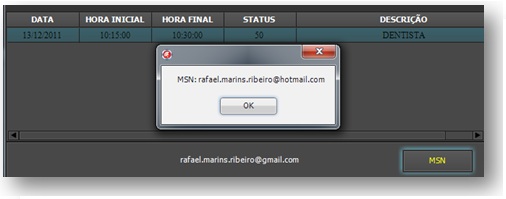

These are too large to focus on today, but in the spirit of discussing fonts, and to pick the low-hanging fruit as far as consistency goes, let’s focus on what can be done to make this app look more native on OSX. One issue not in the screenshot is that the memo changes it background colour to grey when it is focused.More minor things: labels don’t truncate with ellipses (I don’t think FireMonkey can do this yet, I couldn’t find a property for it) and the Cocoa ‘memo’ is focused by default when the window opens.Lion does not show scrollbars they only appear when you begin scrolling. This is most visible in the memo control, where the FireMonkey text is tiny compared to the default Cocoa font, and on the button, again where the text size is smaller. FireMonkey is not using system-like fonts, and the text is visibly different to native apps. Some obvious differences just in the screenshots are: On OSX, FireMonkey controls do not look or behave very like native controls. The differences on OSX are larger, and this illustrates a specific example of a more general issue. Here is the same app in FireMonkey and Cocoa incarnations on OSX:
Delphi Firemonkey Styles windows#
These things, and similar issues with other controls, can be fixed by improving the Windows style. Two things are immediately obvious: the text is lighter due to its antialiasing, and the controls are not quite identical: the scrollbar doesn’t look the same and the button has a slightly different shadow. It has a couple of labels of two different sizes (a heading-like size and a normal one), an edit box, a memo and a button. There are three versions, built with the VCL, with FireMonkey, and with Cocoa.
Delphi Firemonkey Styles skin#
It’s almost a side-effect that you can have a variety of different styles to skin the application.)Ĭonsider this simple app which I originally wrote to demonstrate font rendering.

( Styles are not skins: they are how FireMonkey controls render. The immediate problem is that these platforms do not look the same, and it goes beyond styles. You can also manually get many new (about 40+) Styles by using GetIt Package Manger via Tools->GetIt Package Manager Menu of RAD Studio.FireMonkey allows you to design your forms once, and run your application using the same windows on both Windows and OSX. Styles can be found in “C:\Users\Public\Documents\Embarcadero\Studio\ ……\Styles” folder, please check “ C:\Users\Public\Documents\Embarcadero\Studio” for the “ Styles” folder. The side buttons, for example, have the following states: pressed, disabled, hot, normal. For instance, a scroll bar has the following parts: frame, slider, and the two side buttons for each direction. A FMX style consists of a set of values for each of these parts and states. FMX controls are made up of parts and states. More details about FireUI and Styles can be found here and some Premium Styles can be found hereĪ style permits you to change the appearance of every part and state of a control (buttons, edit boxes, lists, panels, trackbars, checkboxes every official component has a style). Optimizing user interfaces for each of these device form factors can be challenging and costly, effectively building multiple separate form views for each device. Customers expect to be able to use an application on their smartphone while on the go and then switch to their tablet or Desktop computer while in their office or at home. Devices are everywhere and users’ expectations are higher than they have ever been. You just need a RAD Studio, C++ Builder which supports styles, we highly recommend you latest RADS, C++ Builder 10.x versions which has new features and improvements on Styles.įireUI is a revolutionary Multi-Device Development. You can also add these Styles to your Old C++ Builder Projects or to Old C++ Builder Unit files. You design your application view in normal ways with buttons, labels, edit boxes, memos, trackbars, panels, switches etc. In RAD Studio, Multi-Device C++ Builder FireMonkey Projects, using styles on your new projects is very easy. Styles are being modernized with RAD Studio, C++ Builder and Delphi since the first XE versions (2010), currently C++ Builder 10.4 has many improvements on Styles.

Styles are similar to themes in Windows or skins of applications. Official Styles are designed by Embarcadero’s Designers and other there are other 3rd party Styles, also users may generate their own styles. Syles are sets of graphical details that define the look and feel of a application visually and they are one of most beautiful and useful UI feature of RAD Studio, that makes your UI elements skinned with professionally designed with different Styles.


 0 kommentar(er)
0 kommentar(er)
